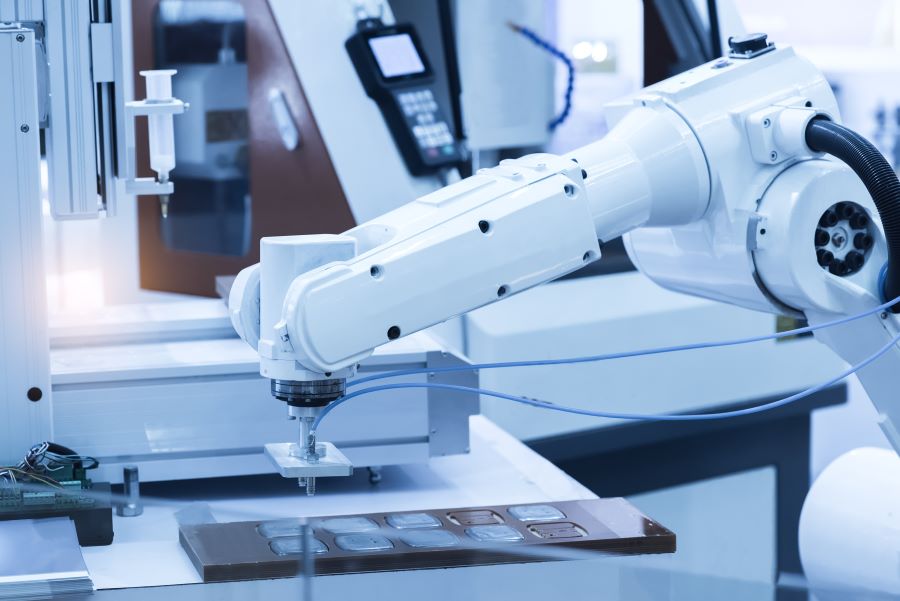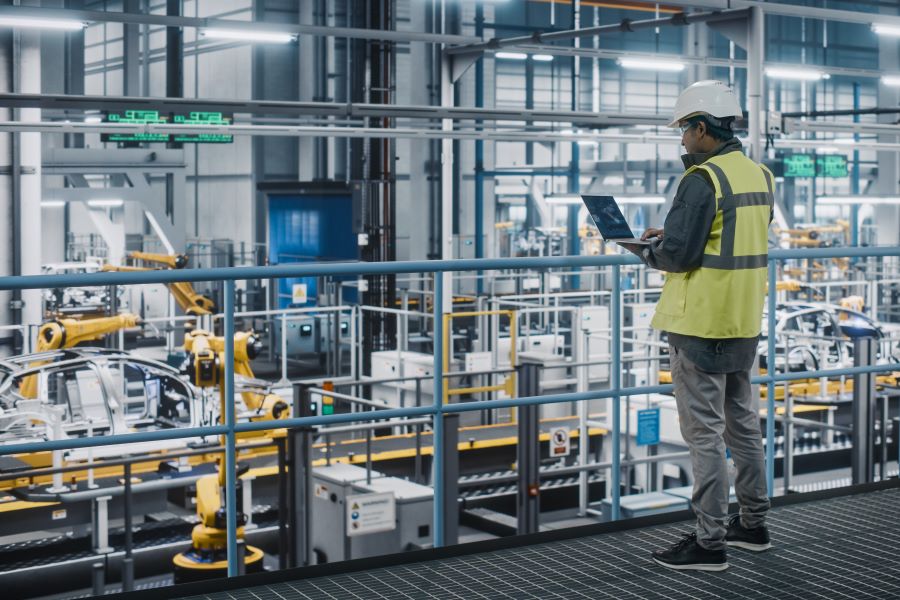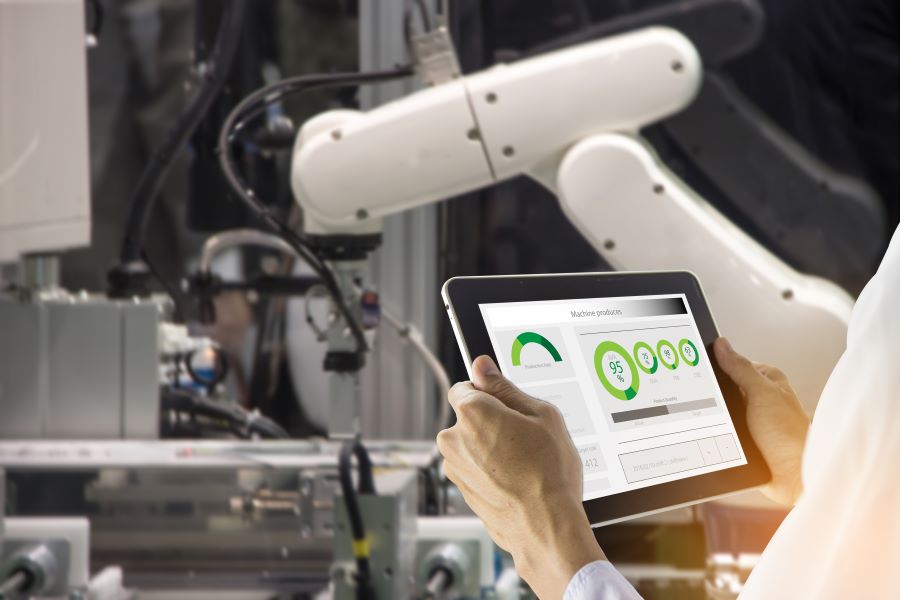Throughout the years, the technology for making processes in industrial settings much safer and easier has progressed continuously. Aside from the invention of better machines for production and other tasks in the workplace, the introduction of robots to the industry has definitely helped speed up the process and make it much safer.
There are two main types of robots that are currently being used by companies all around the world. And up until now, there is still a debate around industrial robots vs. cobots, especially regarding which one is the best to invest in.
What is a Cobot?
A cobot or collaborative robot is a type of technology that is typically lighter and smaller than other kinds of robots. When compared versus industrial robots, cobots can be used in close proximity to humans with only minimal or no safety fencing.
This is possible because cobots are equipped with built-in force controls and sensors that allow them to slow down or stop automatically whenever a human is nearby. So, you don’t have to worry too much about safety hazards with cobots.
Cobots also have a multi-axis manipulator design that provides them with the flexibility and the reach to be used in different industries and for various tasks. It is also suitable for education and robotics training because of its safety features and compact design. This type of robot can easily be fitted on a table and used in smaller facilities.
What is an Industrial Robot?
Most people think of an industrial robot when picturing robots in factories, plants, and other similar settings. They are often described as large and heavy machines that take up considerable floor space in the workplace.
Because of their size, they are often fixed in place and may be hard to move should it become necessary. Industrial robots are also designed to complete certain tasks with exceptional speed and accuracy in their lifetime. This makes them ideal for fulfilling tasks that will stay the same for a long time.
One of the main differences between industrial robots and collaborative robots is that the former can pose dangers to humans. That is why workers that operate these machines often have to stay in protective cages and take extra measures to ensure their safety.
What are the Differences Between Industrial Robots and Collaborative Robots?
Although both kinds of robots are beneficial in industrial settings, there are some differences between industrial robots and collaborative robots that you should know about. Doing so will allow you to choose the right kind of technology that you should buy for your company.
Cost
This factor is one of the biggest differences when comparing industrial robots vs. cobots. Because of their size, industrial robots are often more expensive, which means that it can take you several years to get a return on your investment. Additionally, you need to invest in extensive safety barriers when you obtain an industrial robot, driving up your costs.
Cobots, on the other hand, often come with a more affordable price and lower ongoing cost of ownership. You also don’t have to pay extra for safety barriers, since cobots can be safely operated around humans.
Speed
If you value speed, industrial robots are probably the best option for you. They can perform repetitive tasks quickly, accurately, and with little to no human intervention.
Cobots, on the other hand, cannot reach quite the same speed as their industrial counterparts. However, they are still capable of working at fast speeds when needed.
Accuracy
Another difference between industrial robots and collaborative robots is accuracy. Industrial robots are designed to complete repetitive tasks with high accuracy and precision, making them ideal for companies that need consistent results. Although these machines can sometimes have force control issues, they remain the go-to choice for applications that require accuracy.
Cobots, on the other hand, can come with variable accuracy levels depending on their design and how they are programmed. They are best suited for tasks that don’t need to be completed with exact precision and are more suitable for applications that require flexible automation and don’t necessarily require high accuracy.
Sensitivity
Industrial robots are not the best choice for delicate tasks since they may lack the sensitivity needed for such jobs. This is because most standard industrial robots only rely on vision to perceive what they’re doing and their surroundings.
Meanwhile, cobot systems are often equipped with a variety of sensing technologies. These allow the robot to perceive the motion and force given by the human working with it and adapt its movements accordingly.
Safety
Since industrial robots vs. cobots are quite large and powerful, they need to be separated from humans in caged areas. Therefore, workers will not have direct contact with the robot and cannot collaborate with it in any way.
Cobots, on the other hand, are designed to interact safely with their human counterparts. This means that workers can work directly with the robot without any safety barriers, making it easier for them to collaborate on tasks.
Flexibility
If you value flexibility, you might want to stay away from industrial robots. This is because they don’t offer much in the way of customizability and can only perform one task in their lifetime. Although this might be fine for larger companies that will most likely adopt the same process for a long time, inflexibility is not ideal for most companies.
Instead, you should consider investing in cobots. This technology is suitable for companies that require flexibility since you can easily program the robot to do a variety of tasks. Additionally, cobots are able to operate in multiple locations and can quickly be reprogrammed for different tasks. This makes them perfect for companies that need to adapt their processes in the future.
Choose the Right Robotic Solution for Your Company
Choosing the right technology to invest in for your company is not an easy task. You need to consider different factors before deciding between industrial robots vs. cobots, including the factors discussed above.
If you decide on a traditional industrial robot, you can enjoy the advantage of speed and accuracy. But you will also need to invest in safety barriers and may not benefit from the flexibility that cobots offer.
On the other hand, if you choose a cobot, you will benefit from its sensitivity to human touch, lack of safety barriers, and increased flexibility. However, they may not provide the same speed and accuracy as industrial robots.
It is important to consider all of these factors before investing in a robotic solution for your business. Make sure to do your research and find the right technology that meets all of your needs. Once you’ve decided on the right robotic solution for your company, you can begin to reap the benefits of automation.
Contact us for more information on AI cobot solutions!
Techman Robot’s AI cobots are equipped with advanced Al and machine learning capabilities that enable the cobots to increase their efficiency over time. These cobots are known for their built-in smart vision system, providing ease of use and versatility, ideal for a wide range of applications, including material handling, AOI inspection, and palletizing.



